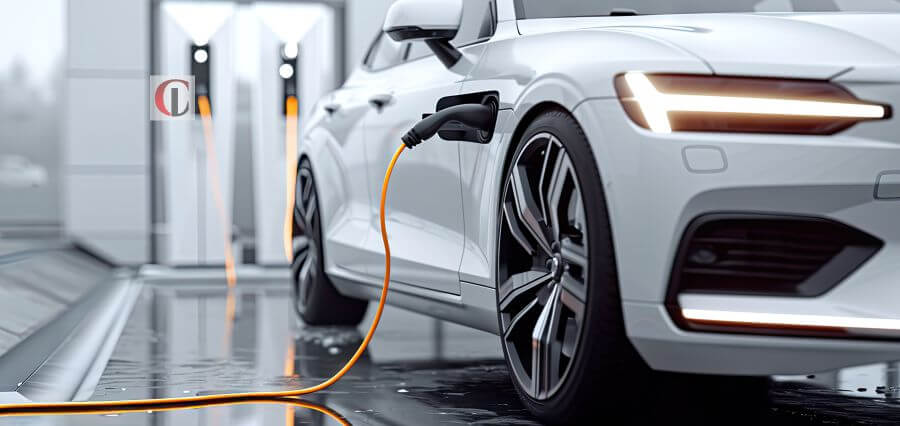The electric vehicle (EV) market, once a niche segment driven by environmental enthusiasts and tech-savvy early adopters, is rapidly accelerating into the mainstream. With the increasing urgency to combat climate change, coupled with significant advancements in battery technology and infrastructure, the global transition from internal combustion engines (ICE) to electric drivetrains is not only inevitable but is unfolding before our eyes. As the automotive industry gears up for a future dominated by EVs, several scenarios and possibilities shape what this landscape could look like in the coming years.
Technological Advancements: The Catalyst for Change
One of the most critical factors propelling the EV market is the relentless pace of technological innovation. Battery technology, which lies at the heart of electric vehicles, has seen remarkable improvements in recent years. The shift from traditional lithium-ion batteries to next-generation solid-state batteries is one of the most promising developments.
These batteries offer higher energy density, faster charging times and enhanced safety, addressing some of the key concerns that have hindered EV adoption. As these technologies become more commercially viable, the range anxiety that once plagued potential buyers is diminishing, making EVs a more attractive option for the average consumer.
Moreover, the integration of artificial intelligence (AI) and machine learning in EVs is revolutionizing the driving experience. Advanced Driver-Assistance Systems (ADAS) are becoming more sophisticated, with the potential to achieve fully autonomous driving soon. This technology not only enhances safety but also opens new possibilities for ride-sharing services and fleet management, further driving the adoption of EVs.
Infrastructure Development: Bridging the Gap
While the technology behind EVs continues to evolve, the development of a robust and accessible charging infrastructure is equally crucial. The future of the EV market hinges on the availability of fast, reliable and widespread charging stations. Governments and private companies worldwide are investing heavily in expanding the charging network to meet the growing demand. The rise of ultra-fast charging stations, capable of replenishing an EV’s battery in minutes rather than hours, is set to make electric vehicles more convenient for long-distance travel, breaking down one of the last barriers to widespread adoption.
In addition to public charging stations, the concept of Vehicle-To-Grid (V2G) technology is gaining traction. This technology allows EVs to not only draw power from the grid but also feed energy back into it during peak demand times. This bidirectional energy flow could transform EVs into mobile energy storage units, providing stability to the grid and creating new revenue streams for EV owners. As V2G technology becomes more widespread, it could play a pivotal role in the broader integration of renewable energy sources, further cementing the role of EVs in the transition to a sustainable energy future.
Market Dynamics: The Shift from Niche to Mainstream
As the electric vehicle market matures, we are witnessing a shift from niche products catering to a specific demographic to a broader market appeal. Traditional automotive manufacturers are pivoting their strategies to focus on EVs, often setting ambitious targets to phase out ICE vehicles entirely within the next decade. This shift is driven not only by regulatory pressures and environmental concerns but also by the growing consumer demand for sustainable and innovative mobility solutions.
One of the most significant indicators of this shift is the increasing variety of EV models available across different price points. From affordable compact cars to luxury SUVs, the market now offers a diverse range of options to cater to various consumer preferences and budgets. As economies of scale come into play, the cost of EV production is expected to decrease further, making electric vehicles more accessible to the mass market.
Moreover, the rise of electric commercial vehicles is another critical trend shaping the future of the EV market. The demand for electric trucks, buses and delivery vans is surging as businesses seek to reduce their carbon footprint and comply with stricter emissions regulations. The electrification of commercial fleets presents a significant growth opportunity, with the potential to transform urban logistics and public transportation systems.
Policy and Regulation: Driving the Transition
Government policies and regulations are playing a pivotal role in accelerating the adoption of electric vehicles. From stringent emissions standards to generous incentives for EV buyers, policymakers are using various tools to promote the transition to electric mobility. Many countries have announced plans to ban the sale of new ICE vehicles within the next two decades, signaling a clear commitment to a future dominated by EVs.
In addition to national policies, local governments are also implementing measures to support EV adoption. Cities are introducing low-emission zones, offering perks like free parking for EVs and investing in charging infrastructure. These initiatives are creating a more favorable environment for electric vehicles, encouraging consumers and businesses to make the switch.
However, the future of the EV market is not without challenges. The transition to electric mobility requires significant investment in infrastructure, supply chains and workforce retraining. The availability of critical raw materials for batteries, such as lithium and cobalt, is another concern that could impact the pace of EV adoption. To address these challenges, a coordinated effort between governments, industries and stakeholders is essential.
A Transformative Journey Ahead
In conclusion, the electric vehicle market is at a pivotal moment in its evolution, transitioning from concept to reality. Technological advancements, infrastructure development, market dynamics, and supportive policies are all converging to create a future where electric vehicles are the norm rather than the exception. While challenges remain, the possibilities for the EV market are vast, with the potential to reshape the automotive industry and contribute significantly to a more sustainable world. As we look to the future, the journey towards widespread EV adoption is not just a possibility—it is an inevitable reality that is already unfolding.

